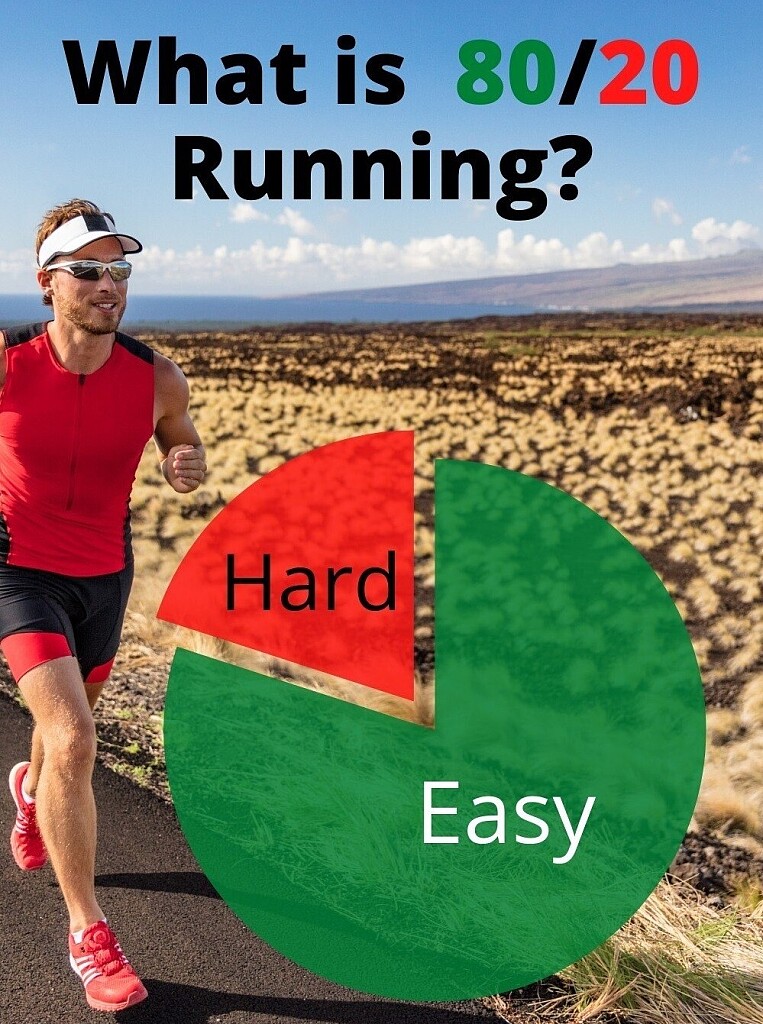Running News Daily
Running News Daily is edited by Bob Anderson. Send your news items to bob@mybestruns.com Advertising opportunities available. Train the Kenyan Way at KATA Kenya and Portugal owned and operated by Bob Anderson. Be sure to catch our movie A Long Run the movie KATA Running Camps and KATA Potato Farms - 31 now open in Kenya! https://kata.ke/
Index to Daily Posts · Sign Up For Updates · Run The World Feed
The 80/20 rule: how to actually apply it to your training, the polarized method of training has grown in popularity. Here's how (and when) to use it for the best results
The 80/20 rule involves running 80 per cent of your mileage at a low intensity, 20 per cent at a high intensity, and very little (if any) at a moderate intensity. It has become a popular method of training over the last several years, with many athletes ditching the pyramidal approach for this polarized training model, some with great success. The question is, is it right for you? And how can you apply it to your own training in a way that makes sense?
Pyramidal vs. polarized
Before polarized training entered the discussion, the majority of athletes following a structured training plan (which, admittedly, isn’t a large percentage of the recreational running population) were likely using the pyramidal method of training. In many ways, this approach to training isn’t that different from polarized training, since it still dictates that athletes run more than half their weekly volume at a low intensity.
Traditionally, pyramidal training is broken down like this: 75 per cent low-intensity, 20 per cent moderate intensity and five per cent high-intensity. Similar to polarized training, this method is based on the idea that the majority of an endurance athlete’s training should be low-intensity aerobic work, since this is the most important factor in driving aerobic adaptations while giving your body enough time to recover between sessions.

The difference, of course, is the inclusion of moderate-intensity tempo or threshold work, which followers of the 80/20 argue is less effective and isn’t the best use of your training hours.
Which model should you follow?
The truth is, both models have been proven to be highly effective at improving running performance, so the choice between which one you should follow often comes down to what works better for you, your experience level and your lifestyle. In many cases, runners will likely use both training models in the lead-up to their goal races. Confused? Here are a few factors that will influence which mileage breakdown you apply to your training:

Experience level
If you are new to structured training or new to running in general, you should avoid doing large volumes of high-intensity work. Running faster is harder on the body and is much more likely to lead to injuries, and doing 20 per cent of your volume at a high intensity may be too much for your body to properly recover between sessions.
This is why beginners will likely benefit more from a pyramidal training approach. Five per cent volume at a high intensity will be easier for your body to handle, and the rest of your low and moderate-intensity work will strengthen and prepare your body for those harder sessions. As you become more experienced, the polarized approach may be more feasible.
Training cycle
The type of training you follow will also change depending on where you’re at in your training cycle, and how close you are to race day. During your base training phase, the pyramidal approach works well to introduce your body to volume and intensity to prepare for harder sessions later in your training cycle. This is a safer way to begin a training cycle, especially if it’s following a period of rest after your last goal race.
As you get closer to race day, your training will likely begin to shift toward a more polarized approach. By this point, you will have built up the necessary strength and stamina to handle a greater volume of high-intensity running without getting injured or burnt out. The closer you get to your goal race, the more race-specific your training will become, and the polarized method of training is a great way to fine-tune your fitness in the final weeks of preparation.
Race distance
Of course, the distance you’re training for will also impact the types of runs and workouts you do. Training for a 5K looks a lot different than training for a marathon, and an experienced athlete training for a shorter distance will require more high-intensity volume if they want to see their times come down. These athletes will likely spend much more time throughout the year following a polarized training model.
A marathon runner, on the other hand, will likely benefit more from having tempo runs and other moderate-intensity work in their programs, which are more directly applicable to running longer distances.
It’s important to remember that regardless of which distance you’re training for, relative beginners, even those preparing for a shorter distance, should still be careful with how much high-intensity volume they’re doing.
The bottom line
Both the polarized and pyramidal training approaches have been proven to be effective, and they are nearly identical in one very important way: the majority of the volume is run at a low intensity. Many runners make the mistake of doing all of their runs at a moderate intensity, which hampers their bodies’ ability to recover between sessions and doesn’t allow for any high-intensity work.
Which approach you choose will depend on several factors, and it may take some trial and error to figure out what works best for you. In any case, there is one more important takeaway from this discussion: following a structured training plan will produce better results, regardless of which method you follow.
Of course, creating your own training plan may seem like a daunting task, especially for the already-busy runner with a full-time job and other commitments. You can find a variety of training plans out there for every race distance and ability level, and while these are athlete-specific, they’re much better than not following a training plan at all.
On the other hand, if you’re really serious about improving your performance or you’re struggling with injuries, enlisting the help of a coach is your best option. A good coach will work with you to create a plan that not only matches your ability level and goals, but works with your schedule and lifestyle.
by Running Magazine
Login to leave a comment




